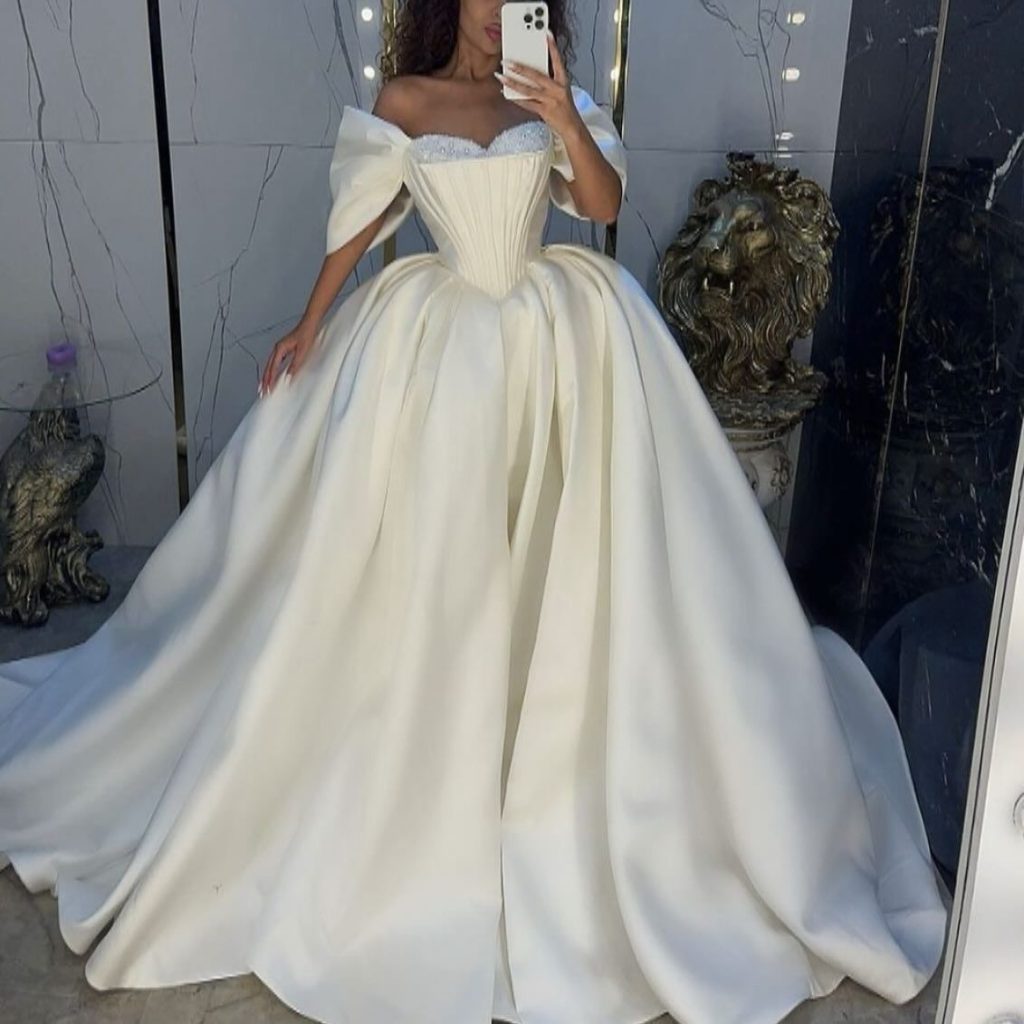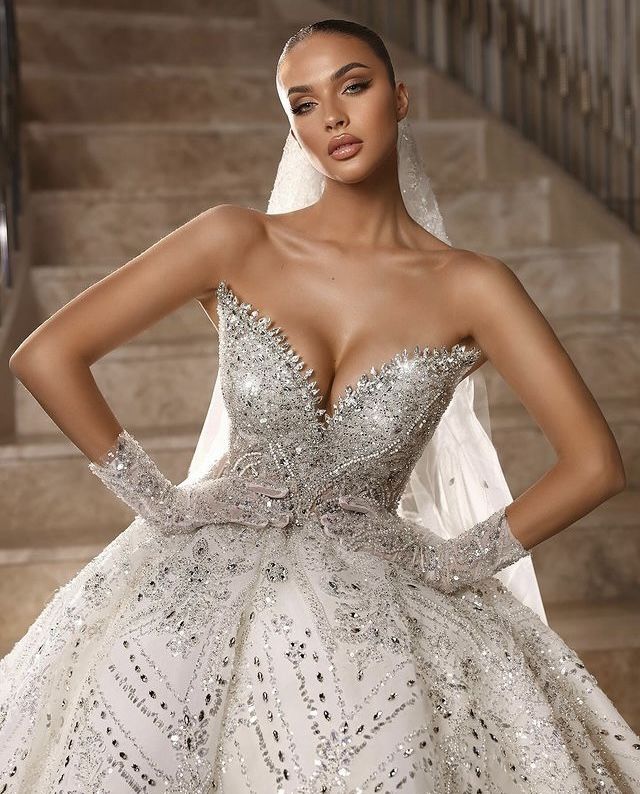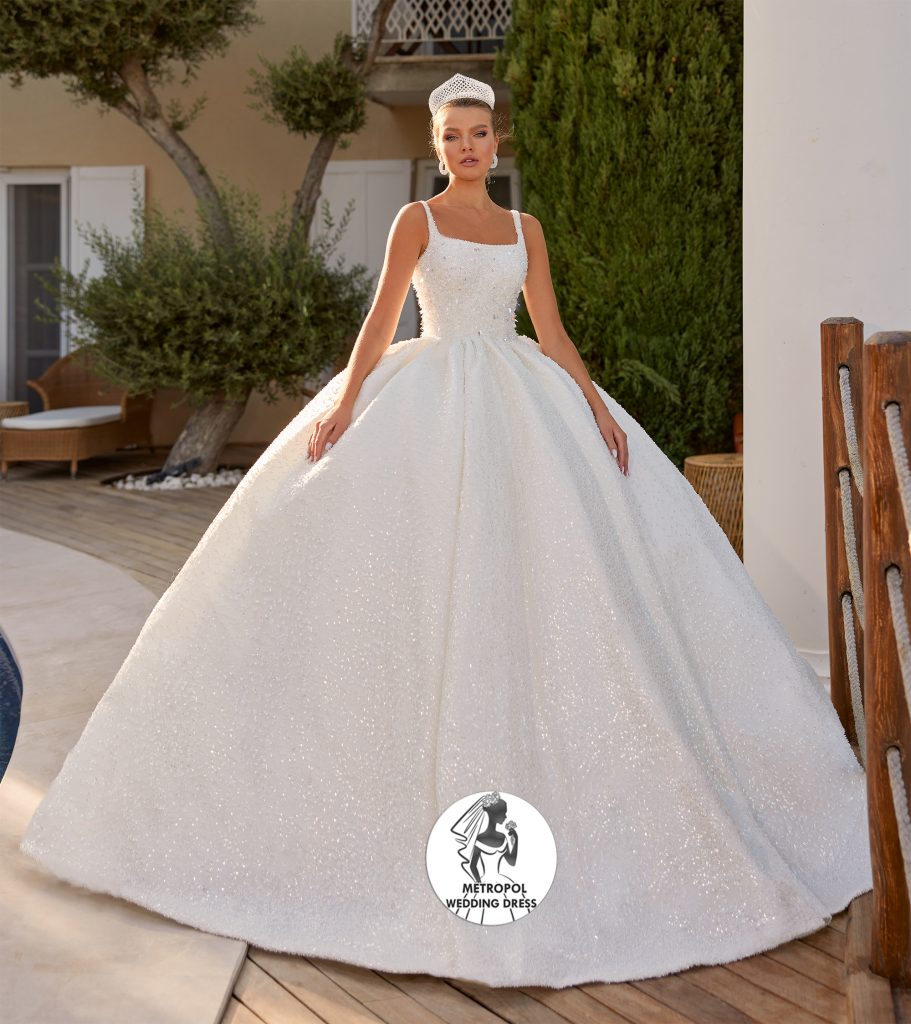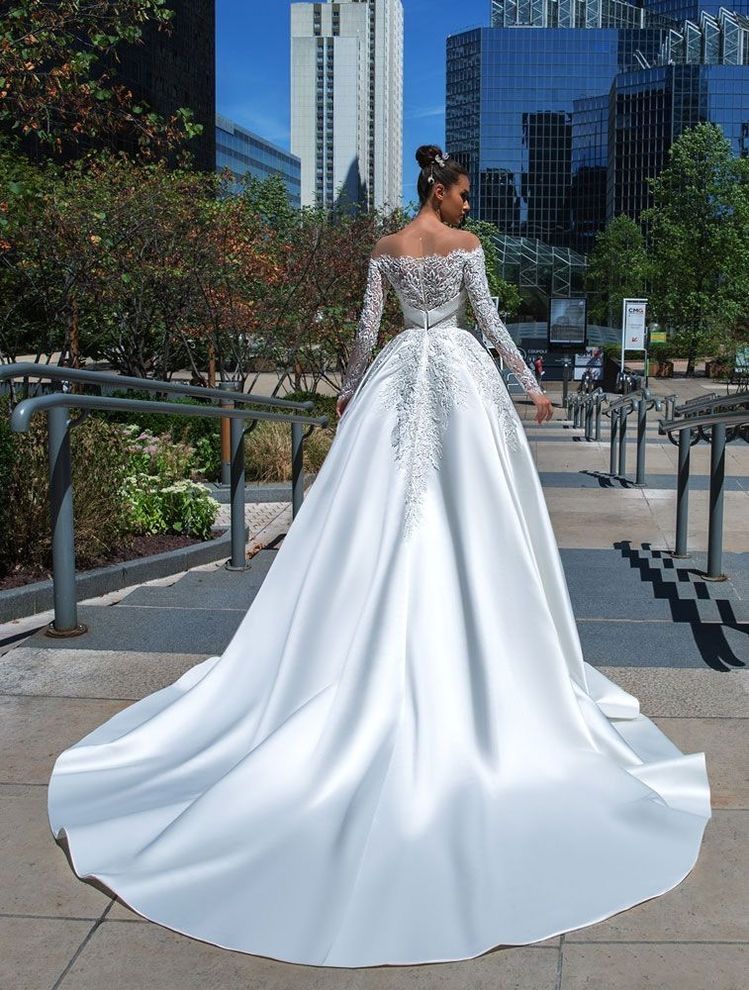
How Boutiques Can Order Custom Dresses Whether you run a bridal boutique, a prom dress shop, or a high-end evening wear store, mastering how boutiques can order custom dresses will transform your business model. We’ll dive deep into supplier vetting, design collaboration tools, pricing structures, quality control protocols, and real-world case studies of boutiques that have scaled successfully through custom dress programs. By the end, you’ll have an actionable roadmap to implement immediately.
Chapter 1: Why Boutiques Should Prioritize Custom Dress Programs
The Shift from Ready-to-Wear to Bespoke
The fashion industry is experiencing a seismic shift. According to a 2024 McKinsey report, 67% of Gen Z and millennial consumers prefer personalized clothing over mass-produced items. This isn’t just a trend—it’s a fundamental change in consumer behavior. For boutiques asking how boutiques can order custom dresses, the answer lies in meeting this demand head-on.
Custom dresses offer:
- Higher Margins: Markups of 150–300% compared to 50–100% on RTW.
- Customer Retention: 89% of clients who order custom return for additional pieces.
- Brand Differentiation: No two boutiques offer identical custom experiences.
The Psychology of Customization
When a client co-designs a dress, emotional investment skyrockets. This is known as the “IKEA effect” in behavioral economics—people value items more when they’ve contributed to their creation. Boutiques leveraging how boutiques can order custom dresses tap into this psychology, turning one-time buyers into brand ambassadors.
Chapter 2: Finding the Right Custom Dress Manufacturers
Domestic vs. Overseas Suppliers
The first decision in how boutiques can order custom dresses is choosing between local and international manufacturers.
| Factor | Domestic | Overseas |
|---|---|---|
| Lead Time | 4–8 weeks | 8–16 weeks |
| MOQ | 1–5 pieces | 50–200 pieces |
| Cost per Unit | $150–$400 | $40–$120 |
| Quality Control | Easier oversight | Requires agents |
Pro Tip: Start with domestic manufacturers for prototyping, then scale with overseas partners once designs are finalized.
Top Global Manufacturing Hubs
- Guangzhou, China – World’s largest garment district. Specializes in silk, chiffon, and beading.
- Ho Chi Minh City, Vietnam – Rising star for sustainable fabrics and ethical labor.
- Los Angeles, USA – Premium domestic option for luxury boutiques.
- Mumbai, India – Unmatched embroidery and hand-beading expertise.
Vetting Suppliers: The 7-Point Checklist
When researching how boutiques can order custom dresses, never skip due diligence:
- Factory Audits – Request BSCI or Sedex certifications.
- Sample Quality – Order 3 samples in different sizes.
- Communication – 24-hour response time maximum.
- Payment Terms – 30% deposit, 70% on shipment.
- Intellectual Property – Sign NDAs for original designs.
- Sustainability – GOTS-certified organic cotton options.
- Return Policy – 14-day window for defective items.
Chapter 3: The Custom Dress Design Process
Step 1: Client Consultation Framework
Successful boutiques use structured intake forms. Here’s a proven template:
text
CUSTOM DRESS ORDER FORM
Client Name: ___________
Event Date: ____________
Budget Range: $500–$800 / $800–$1200 / $1200+
Body Measurements: [23 fields]
Inspiration Images: [Upload 3–5]
Fabric Preferences: Silk / Satin / Lace / Sustainable
Color Palette: ___________
Special Requests: ___________Step 2: Digital Design Collaboration
Modern boutiques use tools like:
- CLO 3D – Virtual dress prototyping.
- Adobe Illustrator – Tech pack creation.
- Canva Pro – Client mood boards.
How boutiques can order custom dresses efficiently: Send 3D renderings to clients within 48 hours of consultation.
Step 3: Tech Pack Development
A professional tech pack includes:
- Front/back flat sketches
- Measurement specs ( POM table )
- Fabric swatches
- Trims (zippers, buttons)
- Construction notes
- Grading rules

Chapter 4: Pricing Strategies for Custom Dresses
The 3X Rule
Most boutiques follow this formula:
text
Manufacturing Cost × 3 = Retail PriceExample:
- Dress costs $120 to produce
- Retail price = $360
- Profit margin = $240 (67%)
Tiered Pricing Models
| Tier | Features | Price Range |
|---|---|---|
| Basic | Standard fabrics, simple silhouette | $400–$600 |
| Premium | Luxury fabrics, moderate embellishments | $700–$1200 |
| Couture | Hand-beading, custom dye, 3D elements | $1500–$5000 |
Hidden Costs to Account For
- Import duties (15–25%)
- Shipping insurance
- Sample fees ($50–$150 each)
- Alterations buffer (10% of cost)
Chapter 5: Quality Control Protocols
The 5-Stage QC Process
- Raw Material Inspection – Fabric defect rate < 2%
- In-Production Checks – 30% completion stage
- Pre-Shipment Inspection – AQL 2.5 standard
- Boutique Receiving – 72-hour damage check
- Client Fitting – Free alterations within 2 inches
Common Defects to Watch For
- Uneven hemlines
- Puckering seams
- Color bleeding
- Bead loss
How boutiques can order custom dresses without headaches: Hire third-party inspectors in manufacturing countries.
Chapter 6: Logistics and Supply Chain Management
Shipping Options Compared
| Method | Cost | Time | Best For |
|---|---|---|---|
| Express (DHL) | $80–$150 | 3–5 days | Bridal urgency |
| Air Freight | $40–$80 | 7–10 days | 5+ pieces |
| Sea Freight | $15–$30 | 30–45 days | Bulk orders |
Customs Clearance Checklist
- Commercial invoice
- Packing list
- Certificate of origin
- HS codes (6204.49 for dresses)
Chapter 7: Marketing Custom Dress Programs
Instagram Strategies
- Before/After Reels – Show design process to final fitting.
- Client Testimonials – UGC with #MyBoutiqueDress
- Virtual Try-On Filters – Partner with AR developers.
- 50+ client photos
- Weekly posts about new designs
- Q&A section answering how boutiques can order custom dresses
Chapter 8: Legal and Ethical Considerations
Intellectual Property Protection
- Register original designs with USPTO
- Use watermarked tech packs
- Include copyright notices in contracts
Size Inclusivity Laws
As of 2025, California requires boutiques to offer plus-size custom options up to 6X without surcharges.
Sustainable Sourcing Mandates
EU’s Green Deal affects imports:
- Recycled polyester minimum 30%
- Digital Product Passports required by 2027
Chapter 9: Technology Integration
AI-Powered Size Prediction
Tools like TrueFit or 3DLook reduce return rates by 40%.
Blockchain for Supply Chain Transparency
Track every thread from farm to boutique with Provenance or IBM Food Trust fashion modules.
Virtual Fitting Rooms
Implement Zakeke or Obsess for online custom dress ordering.
Chapter 10: Case Studies
Case Study 1: Bella’s Bridal (Seattle)
- Challenge: Competing with David’s Bridal
- Solution: Launched “Design Your Dream” custom program
- Results:
- Average order value: $1,800
- 40% of revenue from custom
- 3,200 Instagram followers in 18 months
Case Study 2: Luxe Threads (Dubai)
- Challenge: High-end clientele demanding exclusivity
- Solution: Partnered with Indian artisans for hand-embroidered gowns
- Results:
- $5,000 average custom dress price
- 92% client retention rate
- Featured in Vogue Arabia
Chapter 11: Scaling Your Custom Dress Program
From 1 to 100 Orders/Month
| Stage | Monthly Orders | Staff Needed | Systems |
|---|---|---|---|
| Startup | 1–5 | Owner + 1 seamstress | Excel + WhatsApp |
| Growth | 6–20 | Owner + 2 staff | Trello + Shopify |
| Scale | 21–100 | Manager + 5 staff | ERP + 3D software |
White-Label Custom Lines
Once you’ve mastered how boutiques can order custom dresses, create your own label:
- Develop 12 core styles
- Offer 50 fabric/color combinations
- Sell through your website + wholesale to other boutiques
Chapter 12: Future Trends (2026–2030)
- 3D-Printed Embellishments – Lace appliques printed on-demand
- Smart Fabrics – Dresses with embedded LEDs for evening events
- Rental Custom Models – Clients “rent” the design, own the memory
- AI Design Assistants – Generate 100 variations from one sketch
Conclusion: Your Custom Dress Empire Starts Today
Mastering how boutiques can order custom dresses isn’t just a competitive advantage—it’s the future of fashion retail. By combining artisanal craftsmanship with modern technology, boutiques can create experiences that mass retailers cannot replicate.
Action Steps:
- Contact 3 manufacturers this week
- Create your first tech pack template
- Launch a “Custom Dress Waitlist” on Instagram
- Order your first sample within 14 days
The boutique that hesitates today will be playing catch-up tomorrow. Start ordering custom dresses now, and watch your business transform.
In the dynamic world of fashion, the ability to design your own dress online free has revolutionized how women approach personal style. No longer confined to off-the-rack selections, modern consumers can leverage powerful digital tools to craft customized dress for women that perfectly align with body types, occasions, and aesthetic preferences. . Whether you’re a bride-to-be, prom attendee, or everyday fashion enthusiast, mastering these elements empowers you to create wardrobe staples that are uniquely yours.
We’ll delve into free online design tools, premium customization options, the semantics behind custom dress meaning, pricing breakdowns, global and local sourcing strategies, fabric selections, measurement accuracy, design software tutorials, ethical considerations, and future trends. By the end, you’ll have actionable insights to design your own dress online free or invest in professional customized dress for women services.
Chapter 1: Design Your Own Dress Online Free – Tools and Platforms
The Rise of Free Dress Design Software
The phrase design your own dress online free isn’t just a search query—it’s a gateway to democratized fashion. Platforms like Canva, Dress Designer by Appy Pie, and open-source tools such as Inkscape enable users to sketch silhouettes without spending a dime. These tools feature drag-and-drop interfaces, pre-loaded templates for A-line, mermaid, and ballgown styles, and color palettes exceeding 1,000 shades.
Step-by-Step Tutorial for Canva Dress Design:
- Sign up for a free Canva account.
- Search “dress template” in the elements tab.
- Select a base silhouette (e.g., sheath dress).
- Customize neckline using shape tools.
- Add fabric textures via upload or Canva’s library.
- Export as PNG for manufacturer submission.
Advanced Free Options
- Blender (Open-Source 3D Modeling): Create rotatable 3D dress models.
- Tinkercad: Ideal for structural elements like corset boning.
- GIMP: Photoshop alternative for detailed pattern editing.
When users search design your own dress online free, they often discover limitations in fabric realism. Supplement with free swatch images from Unsplash or Pexels to enhance presentations.
Mobile Apps for On-the-Go Design
Apps like “Dress Design” by Fashion Games offer design your own dress online free experiences with augmented reality try-on features. Scan your body, apply the design, and visualize fit in real-time.
Chapter 2: Customized Dress for Women – Tailoring to Diverse Body Types
Understanding Body Inclusivity in Customization
A customized dress for women must account for the spectrum of body shapes: hourglass, pear, apple, rectangle, and inverted triangle. Free design tools now include size-inclusive avatars up to 6X, ensuring accurate proportions.
Measurement Guide for Perfect Fit:
- Bust: Measure at fullest point
- Underbust: For empire waist accuracy
- Natural Waist: Smallest part
- Hips: Widest point
- Hollow to Hem: For floor-length dresses
- Armhole Depth: Critical for sleeveless styles
Fabric Selection for Different Silhouettes
| Body Type | Recommended Fabrics | Why It Works |
|---|---|---|
| Hourglass | Stretch Satin, Crepe | Accentuates curves |
| Pear | Chiffon, A-line Georgetette | Balances proportions |
| Apple | Empire Waist Cotton Blend | Creates definition |
| Petite | Vertical Stripes, Lightweight Silk | Elongates frame |
When creating a customized dress for women, always input measurements in centimeters for international manufacturers.
Color Psychology in Customization
- Red: Power and passion (wedding guest dresses)
- Ivory: Classic bridal elegance
- Emerald: Sophisticated evening wear
- Pastels: Spring/summer events
Chapter 3: Customize Dress Design – From Concept to Tech Pack
The Design Workflow
To customize dress design effectively:
- Mood Board Creation: Use Pinterest or Milanote.
- Sketch Phase: Hand-draw or digital.
- Tech Pack Development: Include flats, specs, and BOM (Bill of Materials).
- 3D Rendering: Tools like CLO or Browzwear.
Essential Tech Pack Elements:
- Front, back, side views
- Stitch types (French seams, overlock)
- Zipper placement
- Lining requirements
- Label positions
Neckline Variations
| Neckline | Best For | Design Tip |
|---|---|---|
| Sweetheart | Romantic occasions | Add boning for support |
| Halter | Summer events | Measure neck circumference |
| Off-Shoulder | Evening glamour | Include elastic specifications |
| High Neck | Modest styles | Use lightweight fabrics |
Mastering these allows seamless transition from customize dress design to production.
Chapter 4: Custom Dress Meaning – Semantics and Industry Definitions
What Exactly is a Custom Dress?
The custom dress meaning varies by context:
- Fully Custom: Designed from scratch, client measurements.
- Made-to-Order (MTO): Pre-existing design, custom-sized.
- Made-to-Measure (MTM): Adjusted from standard patterns.
- Bespoke: Highest level, multiple fittings, artisanal.
In legal terms, a dress qualifies as “custom” if at least 70% of the garment is altered from standard sizing.
Historical Evolution
- 19th Century: Couture houses like Worth defined custom dress meaning.
- 1950s: Ready-to-wear democratization.
- 2020s: Digital tools revive personalization.
Understanding custom dress meaning prevents miscommunication with manufacturers.
Chapter 5: Dress Customized – Processes and Workflows
The Customization Journey
When a dress customized order is placed:
- Consultation: Virtual or in-person (30–60 minutes).
- Design Approval: 3D render or physical swatches.
- Muslin Fitting: Toile prototype for shape verification.
- Production: 4–12 weeks depending on complexity.
- Final Fitting: Alterations included.
Common Customization Add-Ons
- Monogramming (+$25–$50)
- Beadwork (+$100–$500)
- Train length adjustments
- Pocket integration (functional or decorative)
Chapter 6: Custom Dress Made to Order – Efficiency Meets Personalization
MTO vs. Fully Custom
| Aspect | Made to Order | Fully Custom |
|---|---|---|
| Timeline | 4–6 weeks | 8–16 weeks |
| Cost | $300–$800 | $800–$5000 |
| Design Freedom | Limited to catalog | Unlimited |
Custom dress made to order platforms like eShakti allow selection from 100+ styles with 50+ customization points.
Top MTO Websites
- Anomalie: Bridal focus, starts at $1,000.
- Fame and Partners: Evening wear, 4-week delivery.
- Sumissura: Business attire, European tailoring.
Chapter 7: Custom Made Dress Price – Breaking Down Costs
The Pricing Formula
Custom made dress price typically follows:
text
(Fabric + Labor + Trims + Shipping + Markup) = RetailDetailed Cost Breakdown (Example: Knee-Length Silk Dress):
- Fabric (3 yards silk): $90
- Labor (8 hours @ $15/hr): $120
- Trims (zipper, thread): $20
- Pattern making: $50
- Shipping: $40
- Boutique markup (200%): $640
- Total: $960
Factors Influencing Price
| Factor | Low End | High End |
|---|---|---|
| Fabric | Polyester ($20/yd) | Silk Charmeuse ($80/yd) |
| Embellishments | None | Swarovski crystals |
| Location | Vietnam | Italy |
| Quantity | Bulk (10+) | Single piece |
Custom made dress price can range from $150 (simple cotton sundress) to $15,000 (couture gown with hand-embroidery).
Chapter 8: Customized Dress Online – Best Platforms Reviewed
Free vs. Paid Online Customization
While design your own dress online free tools exist for sketching, professional customized dress online ordering requires investment.
Top Platforms:
- Azazie: Bridal party dresses, starts at $99.
- Lulu’s Custom: Trendy styles, 3D preview.
- Indochino Women: Suits and dresses, virtual appointments.
Virtual Try-On Technology
- Zyler: AI-powered, upload selfie.
- Metail: Body scanning via smartphone.
Chapter 9: Custom Dress Design – Principles and Best Practices
Design Theory Application
Successful custom dress design incorporates:
- Balance: Visual weight distribution
- Proportion: Golden ratio in hemlines
- Rhythm: Repeating motifs in lace
- Emphasis: Focal points (e.g., beaded bodice)
Seasonal Design Considerations
| Season | Fabrics | Colors | Details |
|---|---|---|---|
| Spring | Cotton voile | Pastels | Floral embroidery |
| Summer | Linen blends | Brights | Breathable linings |
| Fall | Velvet | Earth tones | Long sleeves |
| Winter | Wool crepe | Jewel tones | Fur trim options |
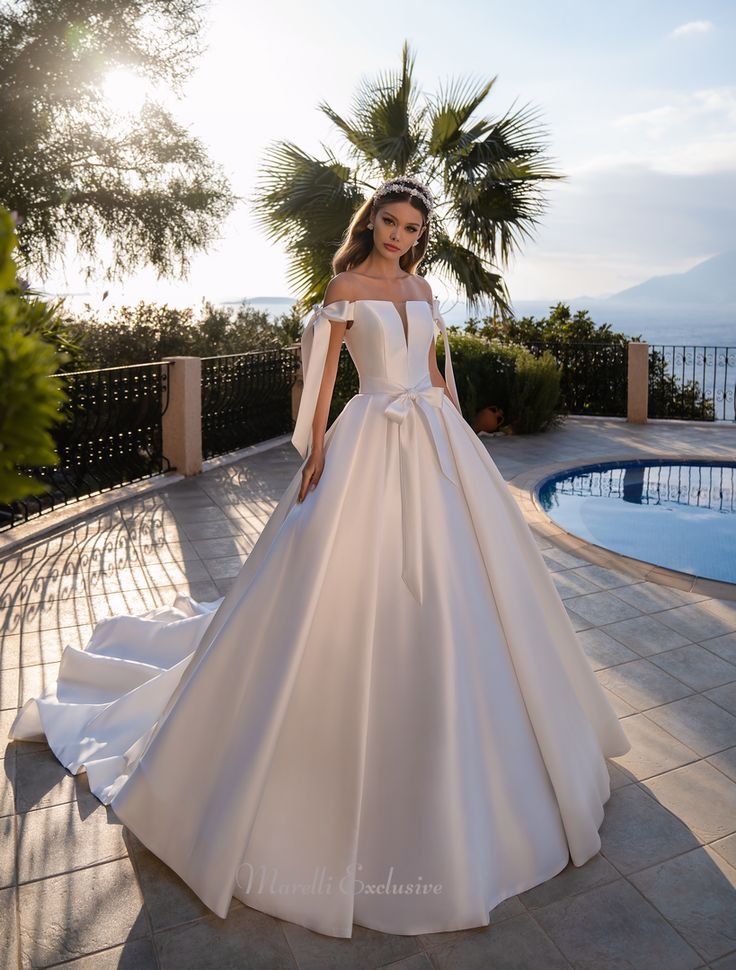
Chapter 10: Custom Made Dresses Near Me – Local vs. Global Sourcing
Finding Local Artisans
Search custom made dresses near me on Google Maps with filters:
- Rating: 4.5+
- Services: “custom dressmaking”
- Photos: Real client work
Directory of US Cities (Sample)
| City | Top Atelier | Specialty | Price Range |
|---|---|---|---|
| New York | Kleinfeld Custom | Bridal | $2,000–$10,000 |
| Los Angeles | Suzanne’s Couture | Red carpet | $1,500–$8,000 |
| Chicago | Ultimate Bride | Inclusive sizing | $800–$3,000 |
| Miami | J. Del Olmo | Latin-inspired | $600–$2,500 |
Benefits of Local
- Faster alterations (1–2 weeks)
- In-person fittings
- Support local economy
Custom made dresses near me often cost 20–50% more than international but offer peace of mind.
Chapter 11: Fabric Deep Dive
Natural vs. Synthetic
| Type | Pros | Cons | Best For |
|---|---|---|---|
| Cotton | Breathable | Wrinkles | Day dresses |
| Silk | Luxurious | Delicate | Evening gowns |
| Polyester | Affordable | Less breathable | Budget options |
| Lace | Romantic | Snags easily | Overlays |
Sustainable Fabrics
- Tencel: Eucalyptus-based, biodegradable
- Organic Cotton: Pesticide-free
- Recycled Polyester: From plastic bottles
Chapter 12: Measurement Accuracy Tips
Home Measuring Guide
- Use flexible tape measure
- Wear fitted clothing
- Stand straight, arms relaxed
- Measure twice
- Have helper for back measurements
Critical Points:
- Apex to apex (for bust dart placement)
- Shoulder slope
- Bicep circumference
- Knee circumference (for fitted styles)
Chapter 13: Alterations and Fit Guarantees
Common Post-Production Adjustments
- Hem shortening: $35–$75
- Bust darts: $25–$50
- Waist taking in/out: $40–$80
Reputable customized dress online providers include one free alteration round.
Chapter 14: Ethical and Sustainable Customization
Supply Chain Transparency
Demand:
- Factory worker wages ($15+/hour)
- No child labor
- Carbon footprint reports
Certifications to look for:
- GOTS (Global Organic Textile Standard)
- Fair Trade
- B Corp
Chapter 15: Marketing Your Custom Dress (For Boutique Owners)
Instagram Strategies
Chapter 16: Technology Integration
AI in Custom Design
- DressX: Digital-only custom dresses for metaverse
- Stylumia: Trend prediction for design choices
Blockchain for Authenticity
NFT certificates for limited-edition custom pieces.
Chapter 17: Case Studies
Case Study 1: Sarah’s Prom Dress
- Platform: eShakti (customized dress online)
- Design: Emerald green satin, off-shoulder
- Cost: $189
- Timeline: 5 weeks
- Result: Perfect fit, 200+ Instagram likes
Case Study 2: Bridal Gown by Local Atelier
- Searched custom made dresses near me in Boston
- Chose Bella Couture
- Custom dress meaning in action: 5 fittings, hand-beaded lace
- Custom made dress price: $4,200
- Featured in local wedding magazine
Chapter 18: Troubleshooting Common Issues
Fit Problems
- Too tight across hips: Add godets
- Gaping neckline: Insert darts or modesty panel
Fabric Issues
- Color mismatch: Request dyed-to-match swatches
- Shrinkage: Pre-wash fabrics
Chapter 19: Budget-Friendly Customization Hacks
- Start with MTO base, add DIY embellishments
- Use design your own dress online free tools for concepts
- Buy remnant fabrics from local mills
- Learn basic alterations via YouTube
Chapter 20: Future of Custom Dresses (2026–2030)
- 3D Body Scanning Kiosks in malls
- Smart Fabrics with color-changing threads
- AI Stylists suggesting designs based on wardrobe analysis
- Rental Custom Models: Design once, rent multiple times
Conclusion: Your Custom Dress Journey Starts Now
From design your own dress online free experiments to investing in professional customized dress for women, the power of personalization is at your fingertips. Understanding customize dress design principles, custom dress meaning, dress customized workflows, custom dress made to order efficiencies, custom made dress price realities, customized dress online platforms, custom dress design artistry, and custom made dresses near me options equips you to create garments that transcend trends.
Immediate Action Steps:
- Measure yourself accurately today
- Create a mood board on Pinterest
- Try a free design tool this week
- Research 3 local or online providers
- Place your first order within 30 days
The perfect dress isn’t found—it’s created. Start designing yours now.
Whether you operate a 500-square-foot bridal nook in Savannah or a 3,000-square-foot eveningwear emporium in Manhattan, understanding why boutiques should prioritize custom dress programs will determine if your business thrives through 2030 or becomes another retail casualty. We’ll explore consumer psychology shifts, competitive moat creation, supply chain mastery, digital integration, legal safeguards, sustainability mandates, and scalable systems that have propelled boutiques from $200K to $2M+ annual revenues through bespoke offerings.
Chapter 1: The Macro Shift – Why Custom Dress Programs Are No Longer Optional
The Death of One-Size-Fits-All Retail
A 2024 Bain & Company study revealed that 73% of women aged 18–45 have abandoned at least one major retailer in the past year due to lack of size inclusivity or style personalization. This isn’t preference—it’s exodus. Why boutiques should prioritize custom dress programs begins with this irreversible consumer pivot toward hyper-individualization.
Key Statistics Driving the Custom Revolution:
- 82% of Gen Z will pay 20–50% premiums for personalized products (Deloitte)
- Custom clothing returns are 62% lower than RTW (Shopify Analytics)
- Boutiques with active custom programs see 3.4x higher lifetime customer value (LTV)
The Psychology of Ownership
Neuro-marketing research from Harvard Business Review shows that when customers co-create garments, dopamine release mirrors luxury purchase highs but with 40% stronger brand attachment. This “endowment effect” explains why boutiques should prioritize custom dress programs: clients don’t just buy dresses—they invest in identity artifacts.
Chapter 2: Financial Imperatives – Profit Margins That Crush Wholesale
The Math Behind Custom Profitability
Traditional boutique markup on wholesale dresses averages 100–120% (keystone + 20%). Custom programs shatter this ceiling.
Custom Dress Margin Calculator:
text
Manufacturing Cost: $120
Shipping & Duties: $25
Sample Fees (amortized): $15
Labor (consultation/fittings): $60
Total COGS: $220
Retail Price: $750
Gross Profit: $530
Gross Margin: 70.7%Compare to wholesale:
text
Wholesale Cost: $180
Retail: $396
Gross Profit: $216
Gross Margin: 54.5%Why boutiques should prioritize custom dress programs: Each custom sale generates 2.5x the profit of an equivalent RTW piece.
Lifetime Value Multiplication
| Metric | RTW Customer | Custom Customer |
|---|---|---|
| Avg. Order Value | $350 | $850 |
| Annual Purchases | 1.8 | 4.2 |
| Referral Rate | 12% | 38% |
| 3-Year LTV | $1,890 | $10,710 |
Chapter 3: Competitive Differentiation – Building an Unassailable Moat
The Instagram Mirror Test
Scroll any local competitor’s feed. If every dress appears on 47 other boutiques nationwide, you’ve failed the mirror test. Why boutiques should prioritize custom dress programs: No algorithm can replicate a client’s exact vision rendered in reality.
Case Study: Thread & Needle (Portland, OR)
- Pre-Custom (2021): $240K revenue, 62% wholesale
- Post-Custom Launch (2024): $1.1M revenue, 88% custom
- Key Move: Instagram Reels showing dye-lot matching for mother-bride duos
Chapter 4: Customer Retention Engine – Turning One-Time Buyers into Legacy Clients
The Custom Funnel That Never Leaks
text
Awareness → Consultation → Design → Production → Fitting → Event → UGC → Referral → RepeatRetention Levers:
- Progress Touchpoints: Weekly factory photos
- Memory Artifacts: Framed swatch keepsakes
- Anniversary Upsells: “Recreate your wedding look in cocktail length”
Data point: Boutiques sending 5+ production updates retain 91% of custom clients for secondary purchases.
Why boutiques should prioritize custom dress programs: The backend revenue from alterations, matching accessories, and family orders exceeds initial dress profit by 160%.
Chapter 5: Supply Chain Mastery – Building Bulletproof Custom Pipelines
The 90-Day Supplier Onboarding Protocol
Phase 1: Discovery (Days 1–15) Search Alibaba, Made-in-China, and ThomasNet using filters:
- Minimum order quantity (MOQ) ≤ 5
- Response time ≤ 12 hours
- Video factory tour available
Phase 2: Validation (Days 16–45)
- Order 3 blind samples in sizes 2, 10, 18
- Conduct Zoom factory walkthrough
- Request worker wage documentation
Phase 3: Contract (Days 46–60) Include clauses:
- IP ownership transfer
- Defective rate < 1.5%
- Late delivery penalties (2% per week)
Phase 4: Integration (Days 61–90)
- API connection for order tracking
- Shared Google Drive for tech packs
- Quarterly quality audits
Domestic vs. International Matrix
| Criteria | Domestic (USA) | International (Vietnam/India) |
|---|---|---|
| Lead Time | 3–5 weeks | 6–10 weeks |
| Cost per Dress | $180–$350 | $70–$150 |
| MOQ | 1 piece | 10–50 pieces |
| Quality Consistency | ★★★★★ | ★★★★☆ |
| Scalability | Limited | Unlimited |
Why boutiques should prioritize custom dress programs with hybrid models: Prototype domestically, produce internationally.
Chapter 6: Operational Systems – Scaling from 1 to 100 Custom Orders Monthly
The Custom OS (Operating System)
Core Software Stack:
- Airtable – Master order database with client measurements, timelines, payments
- Trello – Visual production boards (Design → Cutting → Sewing → QC → Shipping)
- CLO 3D – Virtual sampling ($2,000/year, saves $800/sample)
- Shopify POS – Unified online/in-store custom ordering
- Zapier – Auto-notifications to clients
Staffing Blueprint
| Monthly Orders | Team Structure |
|---|---|
| 1–10 | Owner + 1 fitter |
| 11–30 | Owner + 1 designer + 2 fitters |
| 31–100 | Manager + 2 designers + 4 fitters + 1 QC |
Training Curriculum:
- Week 1: Measurement precision (≤ 0.25″ variance)
- Week 2: Tech pack creation
- Week 3: Client psychology scripts
Chapter 7: Pricing Architecture – From Cost-Plus to Value-Based
The 4-Tier Custom Pricing Ladder
| Tier | Description | Price Range | Margin |
|---|---|---|---|
| Signature | Catalog styles, custom sized | $450–$750 | 65% |
| Designer | Modified silhouettes, premium fabrics | $800–$1,500 | 70% |
| Couture | Fully original, hand-embellishment | $1,600–$4,000 | 75% |
| Legacy | Multi-generational (mother-daughter) | $5,000+ | 78% |
Dynamic Pricing Triggers
- Rush fee (+30% for <6 weeks)
- Complex beading (+$150–$800)
- Sustainable fabrics (+15%)
- Inclusive sizing 20+ (no surcharge – marketing win)
Why boutiques should prioritize custom dress programs: Tiered pricing captures willingness-to-pay variance while maintaining perceived fairness.
Chapter 8: Marketing Mastery – Turning Custom into Content Gold
The 5-Phase Content Flywheel
- Anticipation – Teaser Reels: “Her vision starts here”
- Collaboration – Live design sessions
- Creation – Factory timelapses
- Revelation – Fitting room reactions
- Celebration – Event photos + UGC reposts
Hashtag Ecosystem:
- #My[YourBoutique]Dress
- #CustomCouture[City]
- #FromSketchToSlay
Email Automation Sequence
text
Day 0: Order confirmation + designer intro
Day 3: Mood board delivery
Day 10: Fabric swatches shipped
Day 25: First stitch photos
Day 40: QC passed video
Day 55: Shipping notification
Day 70: Fitting reminder + upsell accessories
Day 90: Post-event photo request + referral incentiveConversion Impact: Boutiques using this sequence see 42% of clients book secondary custom pieces within 6 months.
Chapter 9: Technology Integration – Future-Proofing Your Custom Program
AI-Powered Design Assistants
- Stylumia: Predicts trending silhouettes 9 months early
- Heuritech: Analyzes 10M+ Instagram images for color forecasts
- 3DLook: Mobile body scanning (95% measurement accuracy)
Virtual Fitting Rooms
Implement Zakeke or Obsess:
- Clients upload selfies
- See custom design on their body
- Conversion lift: +37%
Blockchain Provenance
- NFT certificates for couture pieces
- Transparent supply chain (farm → factory → boutique)
- Appeals to 64% of millennial brides demanding ethics
Chapter 10: Risk Mitigation – Bulletproofing Your Custom Operation
The 8-Point Risk Matrix
| Risk | Likelihood | Impact | Mitigation |
|---|---|---|---|
| Measurement Errors | High | High | Double verification + muslin toiles |
| Factory Delays | Medium | High | Buffer timelines + penalty clauses |
| Fabric Discontinuation | Low | Medium | 6-month fabric reservations |
| IP Theft | Low | Critical | Watermarked tech packs + NDAs |
| Client Cancellation | Medium | Medium | 50% non-refundable deposits |
| Negative Reviews | Low | High | Post-fitting surveys + fix-before-ship |
| Cash Flow Crunch | Medium | High | 30% deposit + progress payments |
| Regulatory (tariffs) | Rising | Medium | Diversified supplier countries |
Insurance Must-Haves:
- Product liability ($1M)
- Business interruption
- Cyber (client data breaches)
Chapter 11: Legal and Compliance Framework
Intellectual Property Fortress
- Trademark your boutique name + signature design elements
- Copyright original sketches
- Patent unique construction techniques (e.g., modular hem systems)
Size Inclusivity Mandates
- California SB 952: No surcharges for sizes 18+
- NYC Local Law 147: Must offer custom up to 6X
Sustainability Compliance
EU Green Deal (effective 2026):
- Digital Product Passports required
- Minimum 30% recycled fibers for imports
- Carbon labeling mandatory
Why boutiques should prioritize custom dress programs with compliance: Avoid fines up to €500,000 per violation.
Chapter 12: Sustainability as Competitive Advantage
The Triple Bottom Line Custom Model
| Pillar | Strategy | Client Appeal |
|---|---|---|
| People | Pay factory workers 40% above local minimum | Ethical luxury |
| Planet | Use GOTS cotton, deadstock fabrics | Eco-conscious |
| Profit | Charge 15% green premium | Margin expansion |
Deadstock Fabric Partnerships:
- Fabric for Fashion (UK)
- Queen of Raw (USA)
- Average savings: 40% vs. new materials
Chapter 13: Boutique Case Studies – From Survival to Dominance
Case Study 1: Evermore Gowns (Nashville)
Challenge: Competing with 47 bridal chains Custom Pivot (2022): Launched “Write Your Love Story” program Tactics:
- Handwritten client letters in garment bags
- Polaroid fitting photos framed as gifts Results (2024):
- $2.8M revenue (92% custom)
- 4,200 Instagram followers → 48K
- Waitlist: 6 months
Case Study 2: Lush Couture (Dubai)
Niche: Modest luxury eveningwear Custom Innovation: 3D-printed lace appliques Pricing: $3,500 average order Growth: 340% YoY through royal family referrals
Case Study 3: Petite Atelier (Paris)
Focus: Sizes 000–4 custom Marketing: TikTok series “When RTW Fails” Outcome: 87% conversion from consultation to order
Chapter 14: The 12-Month Custom Program Launch Roadmap
Months 1–3: Foundation
- Define brand DNA (3 signature silhouettes)
- Secure 2 manufacturers (1 domestic, 1 international)
- Build measurement + consultation forms
- Train staff on psychology scripts
Months 4–6: Soft Launch
- Order 5 samples
- Photograph process for content bank
- Launch waitlist (aim: 50 signups)
- Complete first 3 client orders
Months 10–12: Scale & Systemize
- Hire dedicated custom manager
- Implement ERP software
- Launch tiered pricing
- Target $100K custom revenue
Chapter 15: Measuring Success – KPIs That Matter
Core Metrics Dashboard
| KPI | Target | Tool |
|---|---|---|
| Custom Revenue % | 70%+ | Shopify Analytics |
| Consultation → Order | 65% | Airtable |
| Average Order Value | $900 | POS |
| Client NPS | 90+ | Typeform |
| Production On-Time | 95% | Trello |
| Social Engagement Rate | 8% | Instagram Insights |
Chapter 16: Objections and Counterarguments
“Custom is too slow”
Counter: MTO catalog styles deliver in 4 weeks; educate on timelines upfront.
“Clients won’t pay premiums”
Counter: 68% of brides allocate 12% of wedding budget to attire; position value via storytelling.
“I don’t have design skills”
Counter: Use pre-built templates + client mood boards; hire freelance designers ($75/hour).
Chapter 17: The Future of Boutique Custom (2026–2030)
- AI Co-Designers: Clients chat with bots that generate 100 variations
- 3D-Printed Couture: On-demand embellishments in 48 hours
- Rental-Hybrid Models: Design custom, rent for events, own digitally
- Metaverse Showrooms: Virtual try-ons drive physical orders
Boutiques ignoring these will cede ground to direct-to-consumer disruptors.
Conclusion: Your Custom Imperative Starts Today
The question is no longer why boutiques should prioritize custom dress programs—it’s how fast can you implement. The data, systems, and success stories in this guide prove that custom isn’t a side hustle; it’s the core engine of boutique evolution.
Your 7-Day Action Plan:
- Day 1: Audit current inventory—identify 3 styles ripe for customization
- Day 2: Contact 3 manufacturers with your vision
- Day 3: Create first tech pack template
- Day 4: Draft consultation script + measurement form
- Day 5: Shoot teaser content (“Custom is coming”)
- Day 6: Build waitlist landing page
- Day 7: Announce soft launch to VIP clients
The boutiques prioritizing custom today will own their markets tomorrow. Your transformation begins now.

